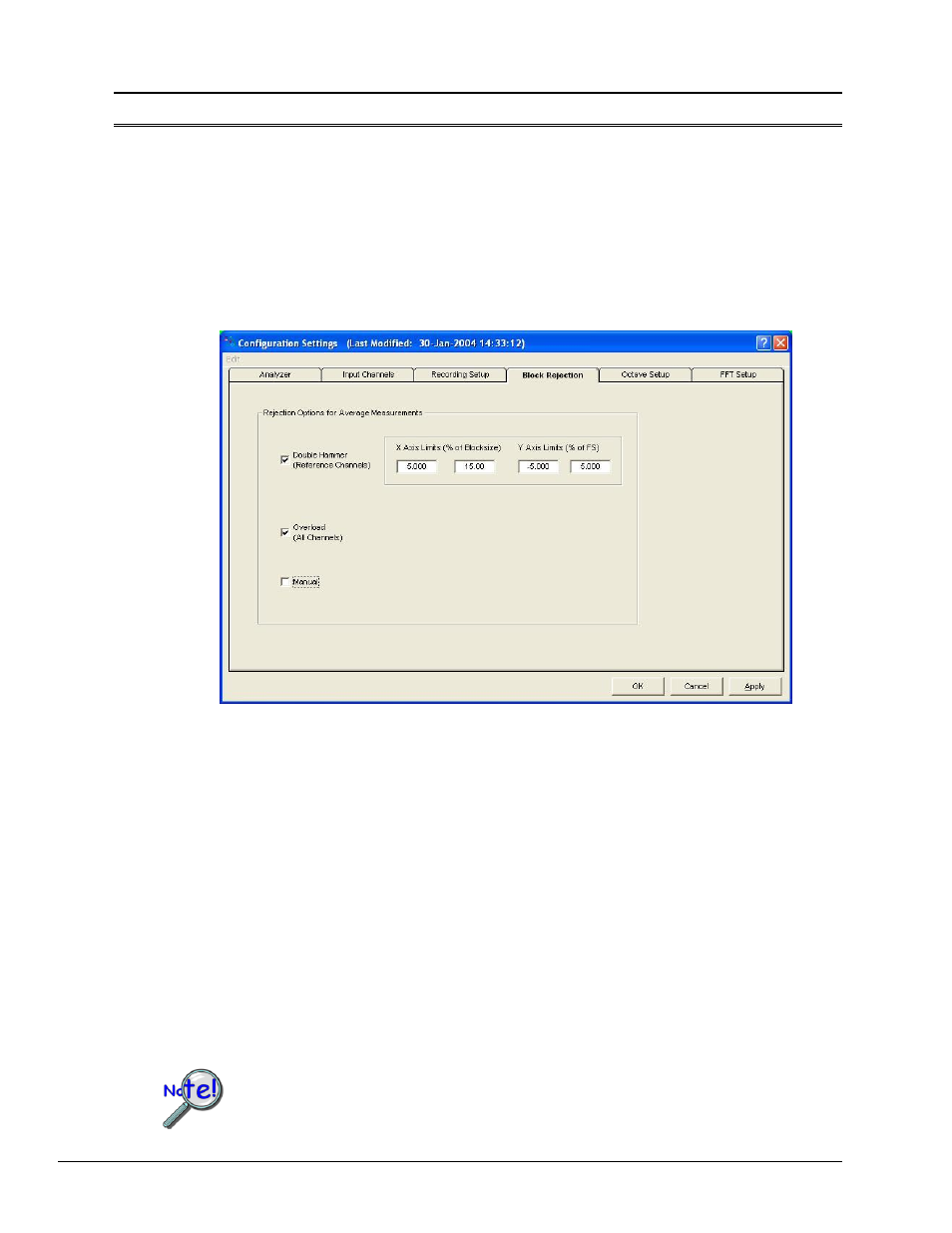Block rejection tab, Configuration – Measurement Computing eZ-Analyst rev.14.1 User Manual
Page 70

4-34 Edit Menu
978791
eZ-Analyst
Edit Menu
> Configuration >
Block Rejection Tab
The Block Rejection Tab exists to allow the software (or user) to reject blocks of data that
result from hammer double strikes, overloads, or simply because the data block “doesn’t look
right.” There are three block rejection modes: Double Hammer protects measurements
against double hammering. Overload protects the measurement by automatically rejecting
overloaded data, and Manual allows you to inspect a measurement and optionally reject it.
You can select any or all of the rejection modes. Also see: Considerations Regarding Double
Hammer Rejection, page 4-35.
Note: The Block Rejection panel is only active when in “Measurement Mode.”
When in “Playback” mode the panel fields will be grayed-out.
Block Rejection Tab
Block rejection looks at the acceptable parameters for a block, and rejects blocks that do not
meet those parameters.
Double
Hammer:
A double hammer occurs when a signal goes outside of the acceptable range that
is set up in the Hammer Rejection section. Click in the Double Hammer box to
turn the Double Hammer option ON and OFF. When the box is checked, the
option is ON.
Overload: An overload is any input signal that reaches or exceeds the specified input Full
Scale range. Click in the Overload box to turn the Overload Rejection option ON
and OFF. When the box is checked, the option is ON.
Manual:
This option allows you to review each block of data before acquiring the next
block. When manual rejection is selected, a <Reject?> button is activated in
the main window. At the end of each average, if you want to reject that
measurement, click on the <Reject?> button. eZ-Analyst will then reject the
current frame of data. The data and average counter will go back to the previous
measurement. Click in the Manual box to turn the Manual option ON or OFF.
When the box is checked, the option is ON.
Block Rejection is used in conjunction with Capturing Transient Data (Input
Channel triggering) and Averaging. These topics are discussed on pages 4-8
and 4-10, respectively.
